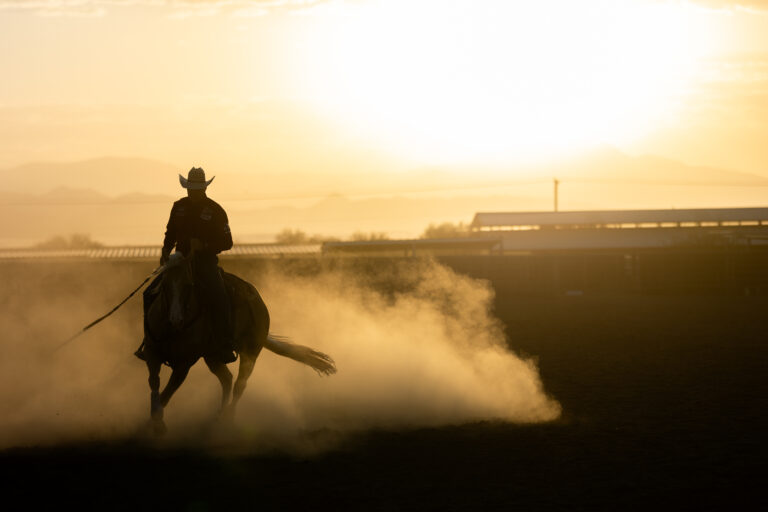The direct, indirect, and supporting rein concept can make a novice rider’s head spin. What’s the difference? What’s the value of knowing it? With this lesson, you’ll have answers to both of those questions.
[READ ABOUT: Romal Reins]
Because this lesson teaches you to isolate, separate, and then recombine your horse’s moving parts, you’ll have a better understanding of how your horse’s body moves in response to pressure from not only the reins, but also your seat and legs. With better control over your horse’s feet, you gain the skills to advance your horsemanship and achieve greater confidence as a rider.
I suggest outfitting your horse in a snaffle bit for this lesson. It offers a one-to-one ratio of pressure, with no other influencing factors, such as a chinstrap, curb action, or leverage from shanks. You also could use a hackamore (bosal), but not a mechanical hackamore, because its construction changes the leverage. Use a mecate or split reins, with two hands on the reins.
[READ: Snaffle Bit Smart]
1. This is a neutral hand position. The rider’s hands are even, her shoulders are square, and she’s not putting more pressure on one rein or the other. There are two fundamentals to understand before we begin the lesson. First, when the rider decides to initiate a movement with the reins, her right rein is responsible for the horse’s right front and left hind feet; her left rein controls the horse’s left front and right hind feet. Second, at a standstill, about 60-percent of the horse’s weight is on his forehand, and about 40-percent is on his hindquarters. This means that moving the hindquarters is a little easier, because it carries less of the horse’s weight.
2. Correct: This is the hand position to initiate a direct rein. The direct rein draws the horse’s front feet. You can see that the rider is moving her rein slightly out to the side—just a hair. It’s not pulled way out to the side, where she’d have to lean forward and down and mess with her horse’s balance. It’s a slight movement, and the horse’s nose and front feet move in the direction they’re being led. You can see that the horse’s head has moved slightly in the direction of the rein’s pressure.
3. Incorrect: The rider’s big, leading movement out to the side with the direct rein causes her to collapse her chest and lean forward, which puts more weight on the horse’s forehand. That’s counterproductive for a direct rein, which is intended to unweight the front end and move it in one direction or the other.
4. Here’s the hand position for an indirect rein. The indirect rein moves the horse’s hind feet. The rider lifts her rein across the horse’s withers and then rotates her pinky toward her shoulder, so that her fingernails are turned up. This puts a different sort of leverage on the bit that holds the front end in place and moves the hind end away, or to the right in this case.
5. Now comes the supporting rein. Here, the rider uses a right direct rein, along with the left rein in support. As the direct rein leads the way, the supporting rein pushes the neck and front feet in the desired direction. Position is key for the support rein. Don’t take it too high; it should be lifted, as shown here, but not way up in the air or it confuses your horse.
6. The supporting rein also works with the indirect rein. To move the horse’s left hind foot, and the entire hindquarters to the left, the rider implements her right indirect rein and uses her left supporting rein to keep the horse’s neck and forehand straight and relatively still. She can also add her right heel, placed about 6 inches behind the cinch, for additional encouragement for the movement.
[READ: Ride With Soft Hands]
Pat Parelli and his wife, Linda, are the founders of Parelli Natural Horsemanship and present major seminars and demos around the world. Learn more about their philosophy and check their schedule of presentations at parelli.com.






